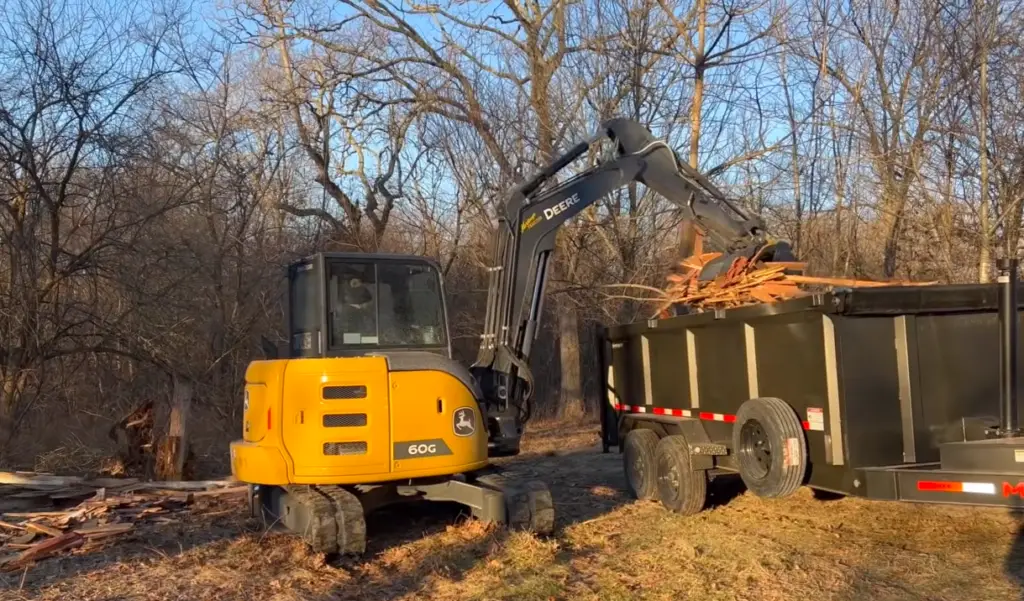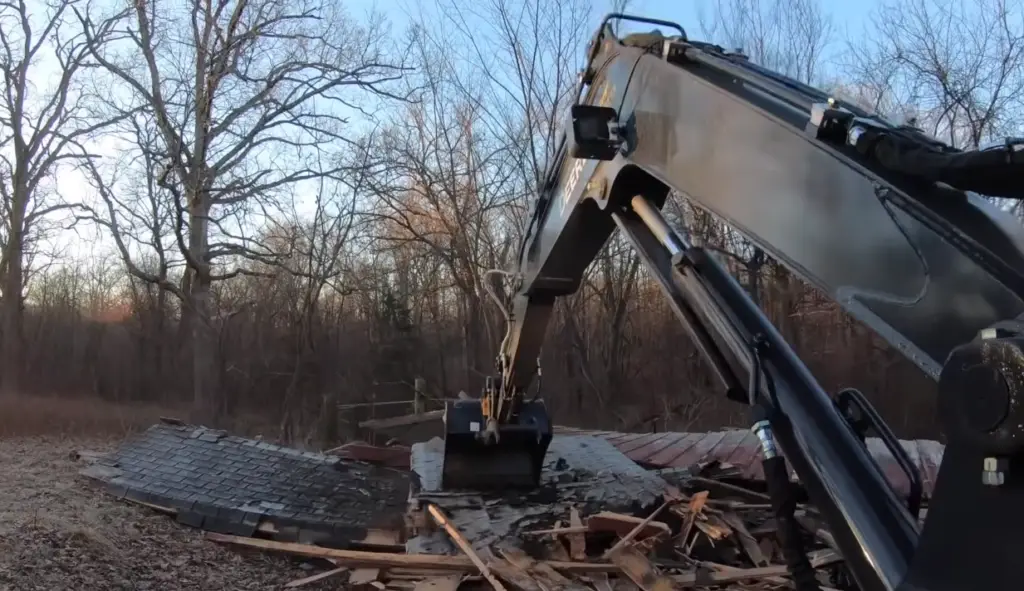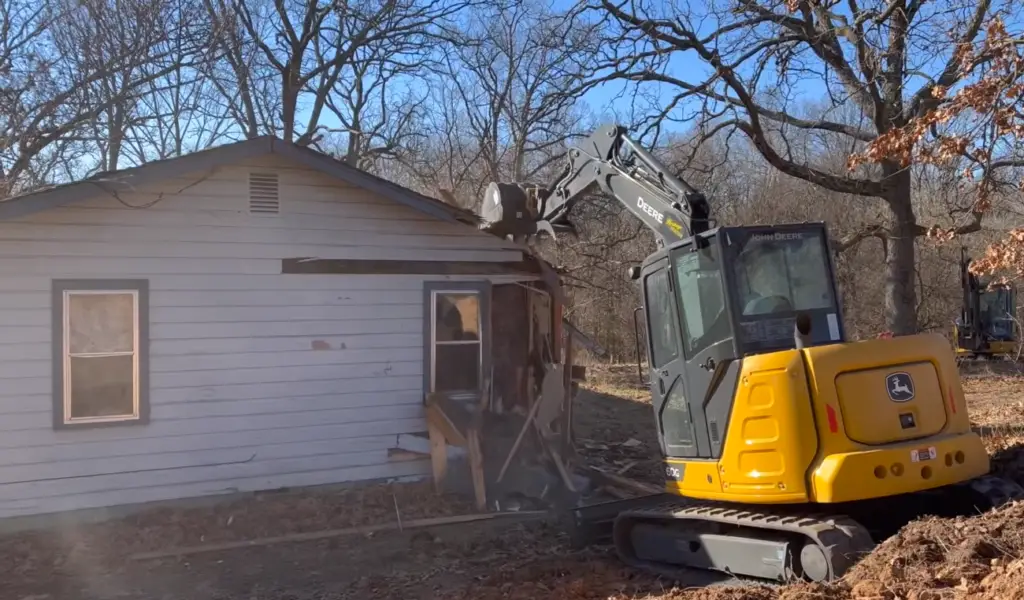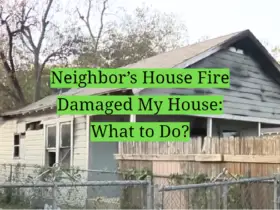Are you demolishing a house? If so, you’re likely looking for the cheapest way to do it. Demolition can be an expensive process, but it doesn’t have to be. In this article, we will discuss some of the cheapest methods of demolition and provide tips on how to keep costs down. We’ll also answer some common questions about demolition. So if you’re ready to learn more about The Cheapest Way to Demolish a House, keep reading!
How Much It Costs to Demolish a House
The cost of demolishing a house depends on several factors, such as the size and type of building, the amount of hazardous material present, access to the property, and local labor costs.

Of course, in some cases demolition may be free if you’re willing to do it yourself or with help from friends and family. [1]
It’s also important to remember that there will be additional costs like permits, hauling away debris and disposal fees. If asbestos is found during demolition this could push the total price higher due to special handling requirements. If you are planning to hire a professional company for the demolition, make sure to get multiple quotes so you can compare prices.
Ways to Reduce House Demolition Costs
No matter the reasons for demolition, there are several ways to reduce costs. Here are some tips that you can use to help:
- Hire a professional contractor – This may seem counterintuitive since hiring someone else obviously adds to the cost. But, in reality, it’s often cheaper to hire a professional than trying to do the job yourself. Professional contractors have the right tools and experience to save time and money on demolition projects.
- Break it down into smaller tasks – Breaking a demolition project into several phases can help you save money. For example, instead of demolishing the entire house at once, you may be able to knock down just one wall or section at a time. This will not only help with cost, but it also means you can better manage the demolition process.
- Salvage building materials – If you are demolishing an older home, there may be many salvageable materials that you can re-use in your new construction project. Anything from bricks and beams to windows and doors can be salvaged and reused, allowing you to drastically reduce the overall cost of demolition.
- Recycle materials – If salvaging isn’t an option, another way to reduce costs is by recycling building materials. This can help offset some of the costs associated with demolition because you won’t have to pay for disposal.
- Take care of permits and inspections – Make sure you take the time to handle all the paperwork associated with demolition projects. This includes any necessary permits, licenses, or inspections that may be required by your local government. Having this information taken care of in advance can help prevent costly delays later on down the line.
Get Multiple Quotes
Once you’ve done your research and have a good understanding of the demolition process, the next step is to get multiple quotes from contractors. Make sure you include all costs – including labor, materials, permits, and disposal fees – in these quotes so that you can make an informed decision about which one is best for your budget.

Deconstruct When Possible
If you’re looking for a cost-effective way to demolish a house, consider deconstruction instead. Deconstructing a home is similar to traditional demolition but it involves more detailed work and requires more time. The benefit of deconstruction is that it allows you to salvage more building materials which can be used in other projects or sold for money.
Plan Ahead
Finally, don’t forget to plan ahead and prepare for any surprises that may arise during the project. Make sure you understand all the rules and regulations associated with demolition projects in your area. Have an emergency fund set aside in case of unexpected costs or delays? And always take into account any hidden fees that could pop up along the way. [2]
By following these tips, you can be confident that you’re doing everything possible to get the most out of your house demolition project while keeping costs low. With careful planning and a little bit of research, you can save money on your next demolition job. With the right information, demolishing a house doesn’t have to be expensive – it can actually be quite inexpensive!

A Cheap Way to Demolish a House
Demolishing a house can be expensive and disruptive, especially if you’re dealing with an older building that may contain hazardous materials. However, there are some ways to make the process as cost-effective as possible.
- Plan Ahead: The first step is to plan ahead and get quotes from multiple contractors before committing to one of them. Make sure they thoroughly understand your requirements and have experience with demolition projects. Also, get the necessary permits in advance to ensure compliance with local regulations.
- Take Advantage of Reclaimed Materials: One way to save money on demolition costs is by taking advantage of reclaimed materials — such as bricks, wood, insulation, etc. — that may still be usable after the house is demolished.
- Hire a Professional: If you’re not experienced with demolition, it’s important to hire a professional who is. They can help ensure the job is done safely and properly, as well as provide advice about the best methods for demolishing your home. Plus, they may be able to save money on labor costs by using certain techniques that require fewer workers or allow them to work more efficiently.
- Consider Doing It Yourself: If you’re up for the challenge, consider doing the demolition yourself — especially if the house isn’t too large or structurally complex. Depending on how much of the process you can do yourself, this could be one of the cheapest ways to demolish a house.
- Recycle, Donate, Upcycle: Before you start demolition, think about ways to recycle, donate, or upcycle any materials that are still usable. This is a great way to save money while reducing the environmental impact of your project. Additionally, some materials may be eligible for tax deductions if they’re donated to charity organizations or other approved institutions.
Demolition Permits
In addition to planning ahead, researching contractors, and considering DIY demolition, you’ll also need to obtain the proper permits if you’re demolishing a house. Depending on where you live, this may require an application fee and/or additional paperwork. Make sure to check with your local building department for specific instructions about obtaining the necessary permits.

Fire Department Training
Before any demolition can begin, your local fire department may require that you receive training and certification on safety procedures. Make sure to check with them in advance and ensure everyone involved is properly trained. Additionally, have a fire extinguisher on site at all times during the project.
Demolition Material Recycling
Recycling materials from demolition is a great way to reduce costs. Whether you hire a contractor or do it yourself, make sure you take advantage of any resources that are available for recycling materials such as lumber, concrete, bricks, and other debris.
Vocational College Partnerships
In some cases, vocational college partnerships may be available to help you with the demolition of your house. This is an excellent way to save money and support local education.
Habitat for Humanity
Another option to consider when demolishing a house is donating materials to Habitat for Humanity. This organization will take construction materials of all kinds and use them to build new homes. [3]

FAQ
How do you take down an old house?
The cheapest way to demolish a house is by performing the work yourself. To do this, you’ll need to rent a dumpster and/or disposal bin so you can collect the debris as you take it down. Start by removing any hazardous materials like asbestos or lead paint before tearing out any part of the structure. You can use pry bars and hammers to break apart walls and remove fixtures, but use caution when doing so in order to avoid damaging surrounding areas.
Once the majority of the house has been removed, you should coordinate with your local municipality for further steps including hauling away debris, backfilling trenches, grading, etc. Depending on where you live, there may also be additional regulations or permits needed for demolishing a house. [4]
How do you remove a house?
When it comes to demolishing a house, the cheapest way is generally to do it yourself. This can save you thousands of dollars in labor costs compared to hiring professionals. But before you get started, make sure you know what you’re doing and that you have all the necessary safety equipment such as gloves, hard hats, eye protection and steel-toed boots.
First, remove any items from the home including furniture, appliances and cabinets. These items should be disposed of safely or given away if possible.
Next, disconnect utilities such as gas and water lines so that they’re not running through the building when demolition begins. It’s also essential that you contact your local municipality for any permits that may be necessary.
Once the house is prepped, demolition can begin. Start by removing windows and doors to get access to the interior and exterior walls. Depending on how much of the structure you need to remove, you can use a sledgehammer or an excavator with a hydraulic breaker attachment for larger demolitions.
As you demolish, be sure to check for any danger signs such as cracks in the foundation or unstable beams that could collapse during the process and cause injury. When it comes to hazardous materials like asbestos, always hire professionals who are trained in handling these materials safely and legally.
Finally, make sure you have a plan for disposing of large amounts of rubble and debris created from the demolition. You may need to rent a dumpster or have it hauled off-site.
These steps should help you safely and effectively remove a house in the most cost-effective way possible.
How long does it take to dismantle a house?
The amount of time it takes to dismantle a house depends on the size and condition of the home, as well as the experience level of the demolishers. Generally, dismantling a house can take anywhere from one day for smaller homes in good condition to several days or even weeks for larger homes that are in poor condition. Some demolition experts recommend breaking down a house into manageable chunks before they start actually tearing it apart so they don’t waste too much time. Additionally, if you plan on salvaging any parts of the house — such as bricks, flooring, pipes, etc. You should do this first before beginning the full-scale deconstruction process. This way you can save both time and money by preventing them from getting damaged during the demolition process. [5]
It’s also important to note that if you plan on demolishing a house yourself, it can take significantly longer than professionals since you may not have the same level of experience or access to special tools and materials. If you do decide to tackle the project yourself, be sure to research all safety protocols and local regulations beforehand.
What happens in a house demolition?
Demolition is the process of taking down a structure, usually by destroying it. In the case of house demolition, this means tearing down all walls, roofs and flooring to make way for new construction or landscaping.
Before any work can begin, all utilities – like electricity, gas and water – must be shut off so that no one gets injured during the process. After that’s done, the house will be cleared of anything valuable or hazardous material in order to ensure safety and compliance with any applicable laws.
Once the area has been cleared out, the demolition begins by removing exterior components such as windows, doors and siding before moving inside to tear down internal walls and then eventually breaking up the flooring. Depending on the size of the house, this process can take anywhere from a few hours to several days.
The debris that is left behind after demolition can either be sorted for recycling or disposed of in a landfill. This will depend on local regulations and the type of materials used when constructing the house.
Useful Video: How to Save Money on a House Flip (DIY Demolition)
Conclusion
Demolishing a house is by no means an easy job and can be overwhelming. But with a little bit of research and planning, you can get it done safely and efficiently – and at the lowest cost possible!
Start by researching local demolition companies to get a better idea of how much they charge for their services, as well as any additional costs that may come up along the way. Keep in mind any permits or regulations you may need before starting your project. Finally, decide on the right method for demolishing your home based on budget and safety concerns.
No matter which approach you choose, make sure to follow all necessary steps for safe demolition – both for yourself and those who will be helping out with the project. By following these guidelines, you can take comfort in knowing that your demolition job will be done safely and correctly.
We hope this article has been helpful. Good luck and happy demolishing!
References
- https://www.mysiteplan.com/blogs/news/knocking-down-a-house
- https://www.hometowndemolitioncontractors.com/blog/whats-the-cheapest-way-to-demolish-a-house
- https://homeguides.sfgate.com/cheap-way-demolish-house-8781.html
- https://www.homeserve.com/en-us/blog/how-to/house-demolition/
- https://www.gjgardner.com.au/learn/knockdown-rebuild/thinking-of-rebuilding-how-much-does-it-cost-to-demolish-a-house/














Leave a Reply